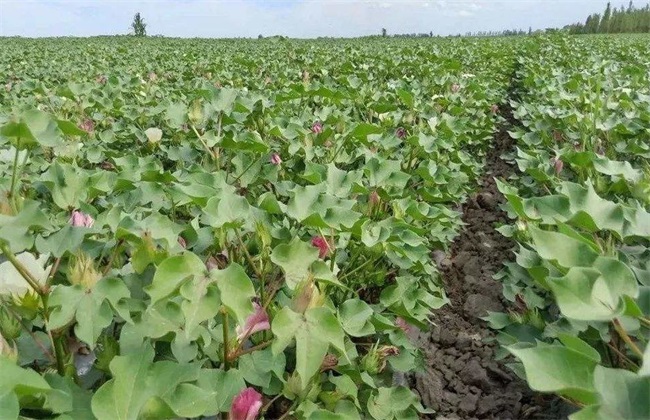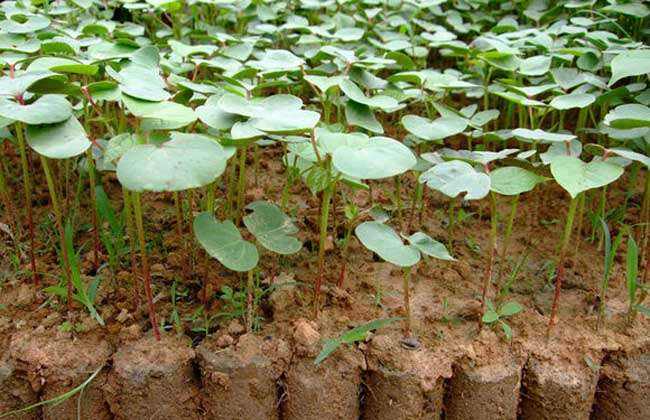How to manage the flowering and Boll stage of Cotton
Cotton has a relatively large planting area in our country. When growing cotton, management is very important. We should properly adjust the management methods according to the growth period of cotton to ensure that cotton can grow normally at each growth stage. Among them, the management of flowering and boll stage is particularly important, which is directly related to the yield and quality of cotton. So how to manage the cotton flowering and boll period? Let's take a look at it with the editor.

1. Rational fertilization
In the flower and boll stage, the application of flower and boll fertilizer is very important. If the soil fertility is large, the soil moisture is good and the cotton plant is strong, it can be applied in combination with chemical control work. Generally, urea of 12kg and potassium sulfate of 8kg can be applied to one mu. If the soil fertility and soil moisture are relatively poor, then the flower and boll fertilizer should be re-applied early. However, when we apply flower and boll fertilizer, we should also control the amount and time of fertilizer application according to the growth of cotton plants. if the daily growth exceeds 3cm, then we should not only postpone the application time of flower and boll fertilizer, but also reduce the amount of nitrogen fertilizer.
2. Timely watering
After entering the flower and boll stage, the leaf area of cotton will reach the maximum in the whole growth period. And it is usually in the hot season, so this is the time when the water evaporates most quickly. Cotton plant is very sensitive to water, if there is not enough water, it will hinder the metabolism of cotton, resulting in a large number of buds and bolls falling off, which is very easy to go to bed early. Therefore, if the cotton flower and boll period encountered drought and there is no rain, timely watering can not only meet the water needs of cotton plants, but also promote the decomposition of fertilizer and root absorption to achieve the purpose of promoting and lowering control.
3. Cultivate the soil by ploughing.
During the work of pruning and pest control in cotton fields, class consolidation may occur in the soil. Reduce the permeability of the soil, resulting in premature senescence of the roots, so we should timely break the soil consolidation and do a good job of ploughing and hoeing before the cotton is closed. However, it should be noted that because the root regeneration ability of cotton is not strong during the flowering and boll stage. Therefore, the depth of mid-ploughing should not be too deep, and then it can be carried out in combination with soil cultivation. It can not only avoid plant lodging, but also improve permeability.
4. Pruning and topping
Pruning is also indispensable in cotton flowering and boll stage, which is also a major measure to improve cotton field permeability and boll protection. When pruning and topping, the main thing is to remove one leaf and one heart. Bystander can inhibit the top growth of fruit branches, avoid excessive lateral growth of cotton plants, and improve its permeability. Concentrate the nutrition on the fruit branch to increase the weight of single boll. When playing side-by-side, the number of fruit-retaining nodes in each fruit branch should be controlled according to the actual situation, usually kept at about 3. The superfluous buds and crazy branches of the main stem and fruit branches and leaves of the plant should be erased in time to prevent the cotton field from being too closed.
The above is a brief introduction to how to manage cotton flowering and boll period. That's all for today's introduction. This article is for reference only. I hope it can help you all.
Related
- The first cup of black tea in spring, the flavor and history of tea gardens in Kenya, Africa
- The computer can not only choose potatoes, but also grow tea rice. AI will grow winter oolong tea champion.
- It is not only the inflated tea bitten by insects, but also engraved with the four seasons tea in Beipu.
- The Oriental Beauty Tea Festival in Zhuxian County takes the stage at the weekend to experience the plus-size feast of oil tea.
- & quot; Oriental Beauty Tea & Exploration of Emei in Hsinchu, the hometown of quot;
- The new variety of strawberry "Tainong 1" dessert is the first choice with mellow aroma. Crimson gorgeous
- History of Tea in Taiwan: from Wild Inner Mountain to Export Tea Garden
- Two types of Taiwan Oriental Beauty Black Tea won the British three-Star Award for Childhood Tea Xiang Zhang Jiaqi changed from pilot to champion tea maker.
- Banana species and varieties: the planting history of Taiwan Xianren banana and dwarf banana is long, is banana disease resistant?
- Coffee planting Technology: Qianjie Coffee from Seedling to harvesting



